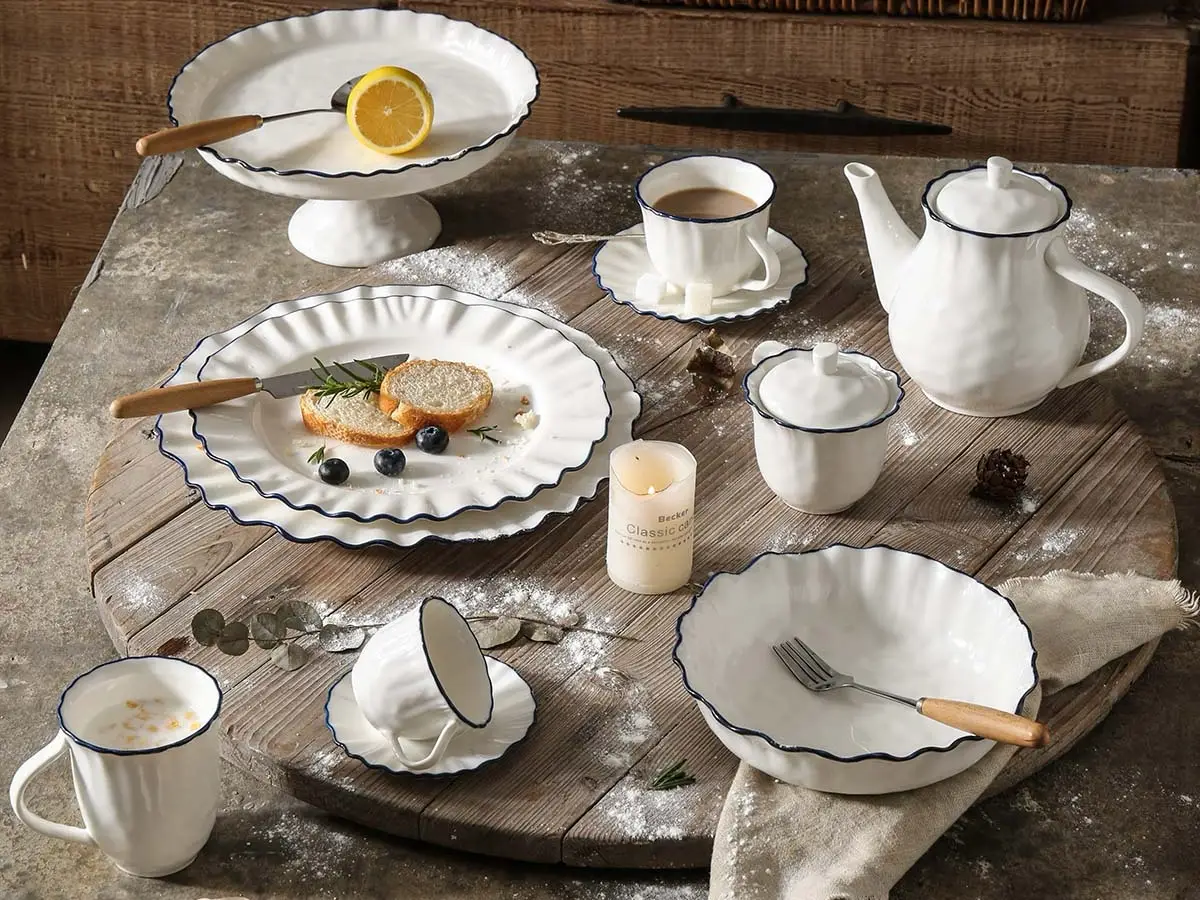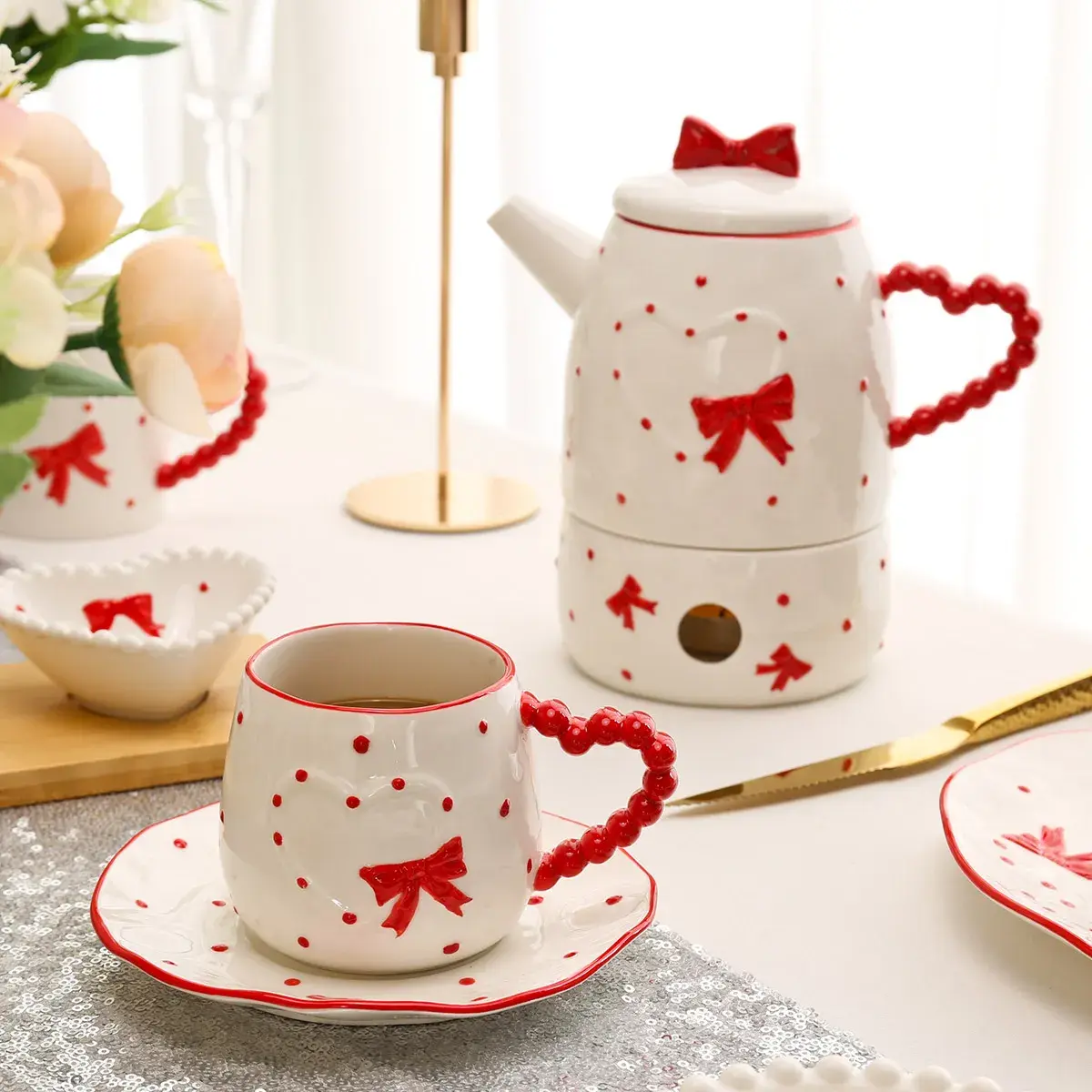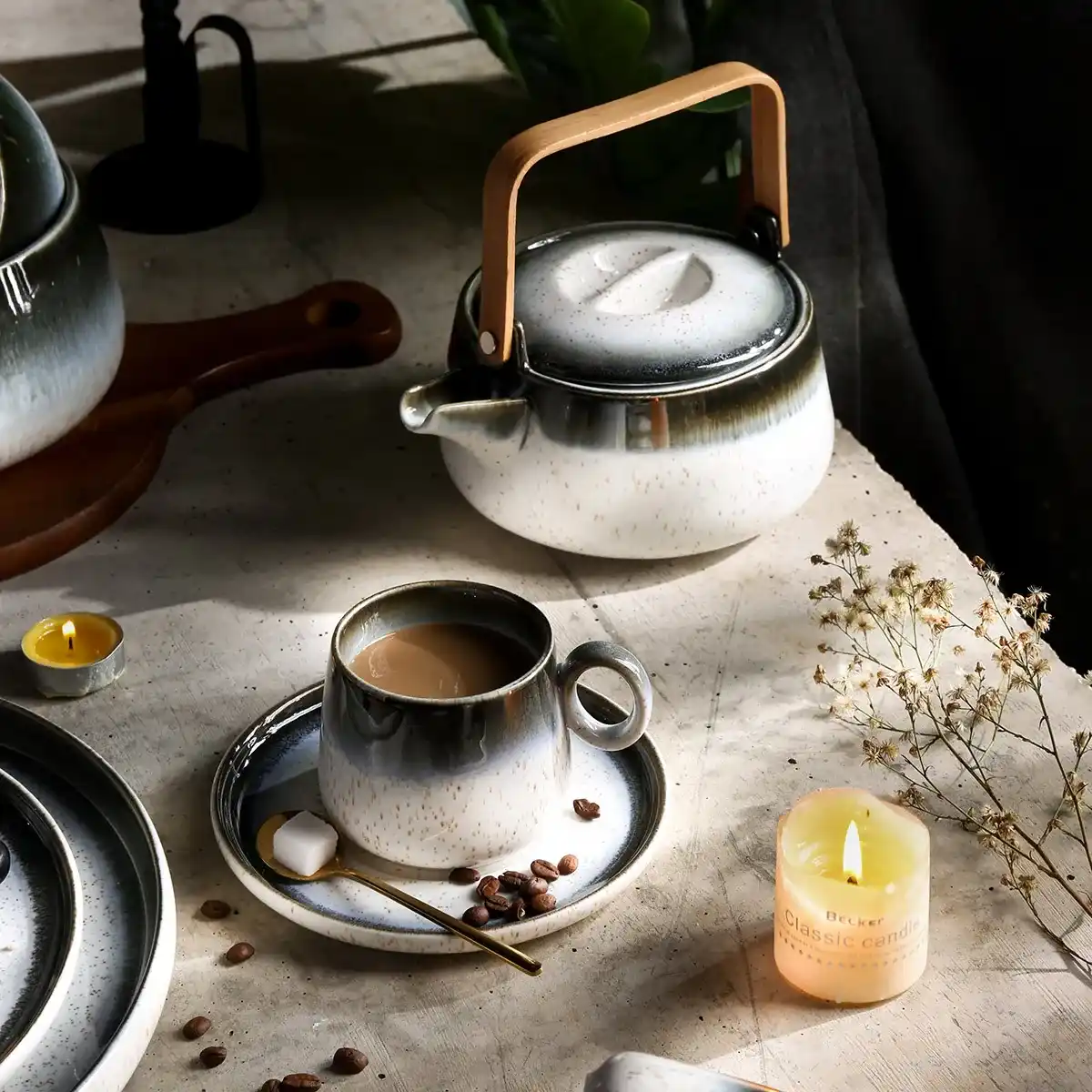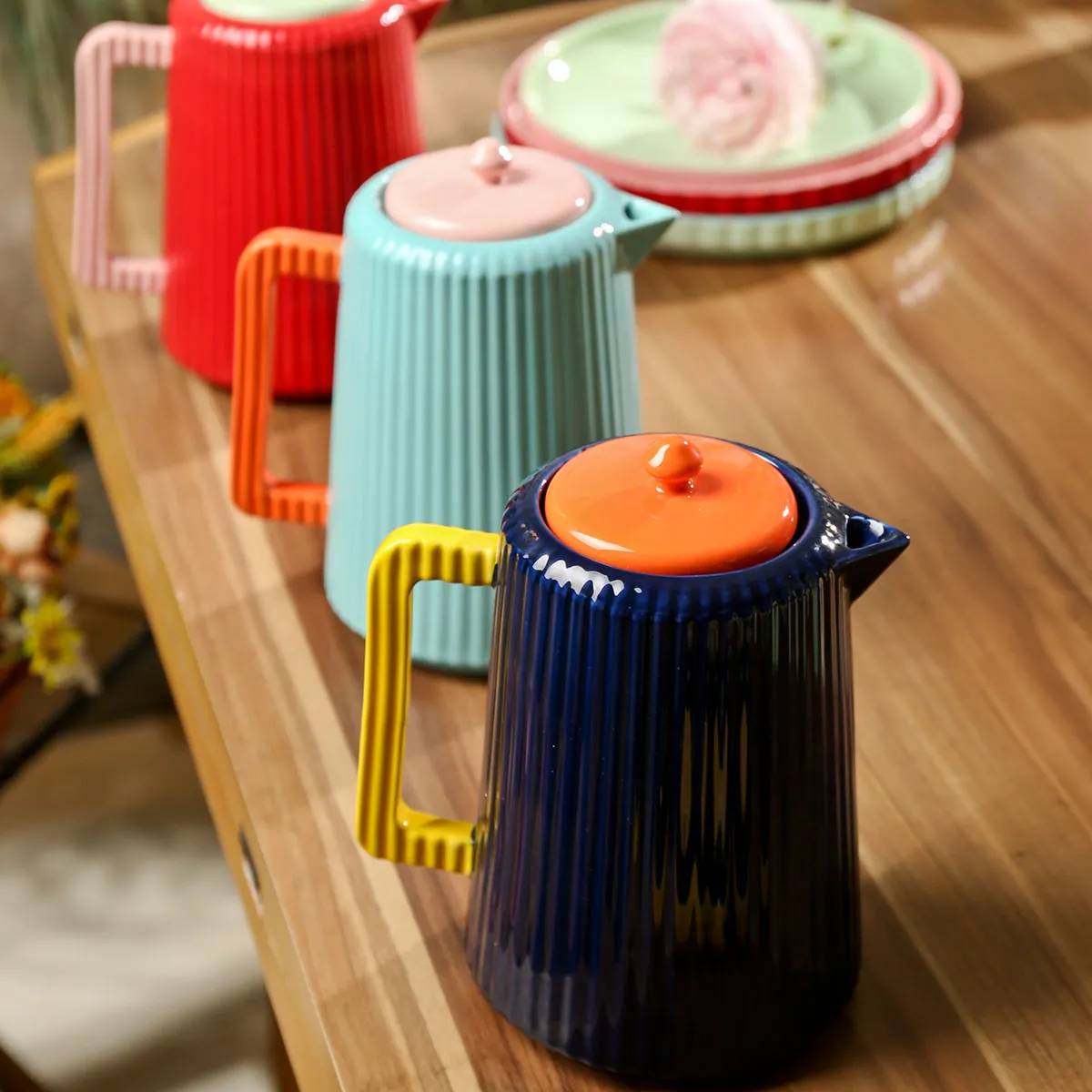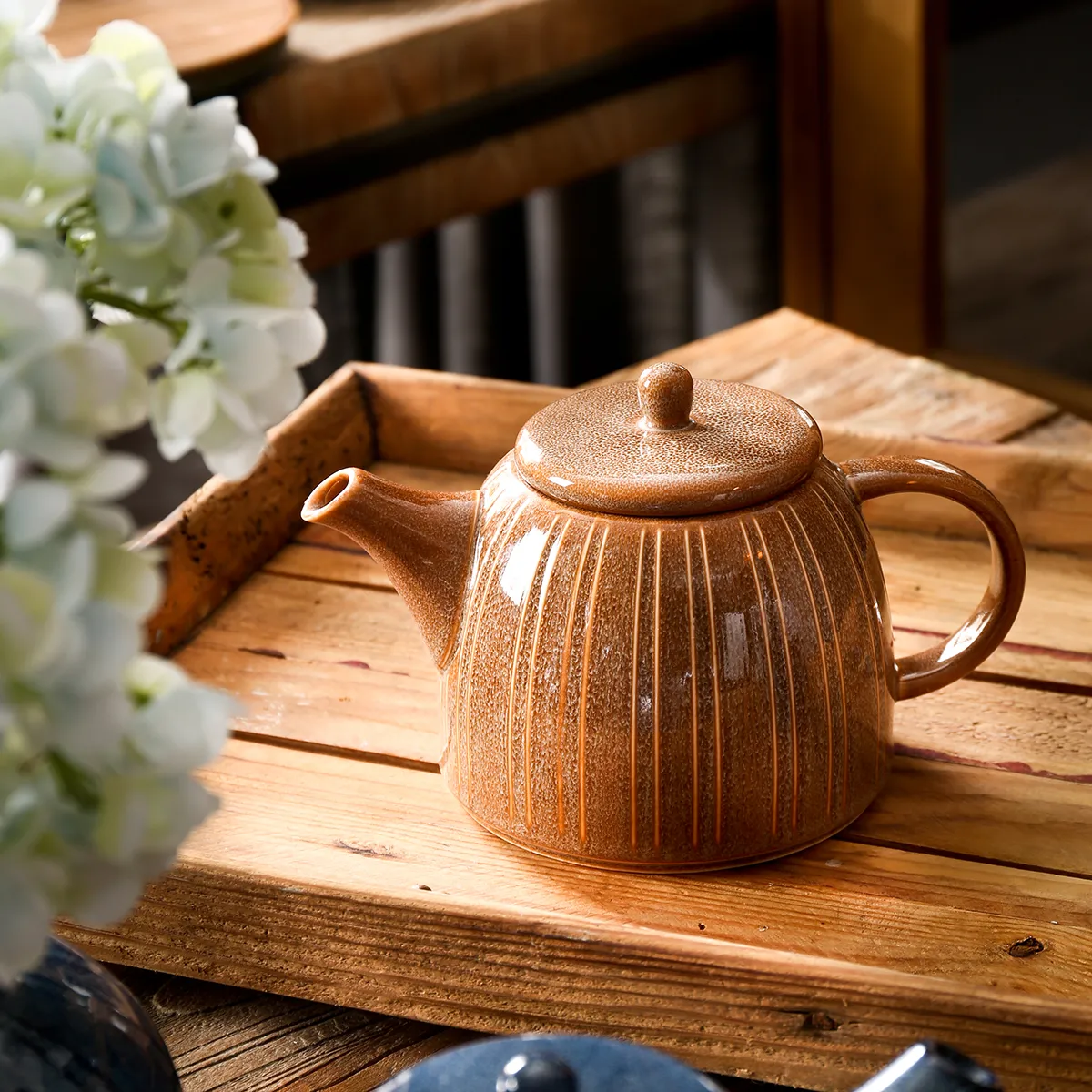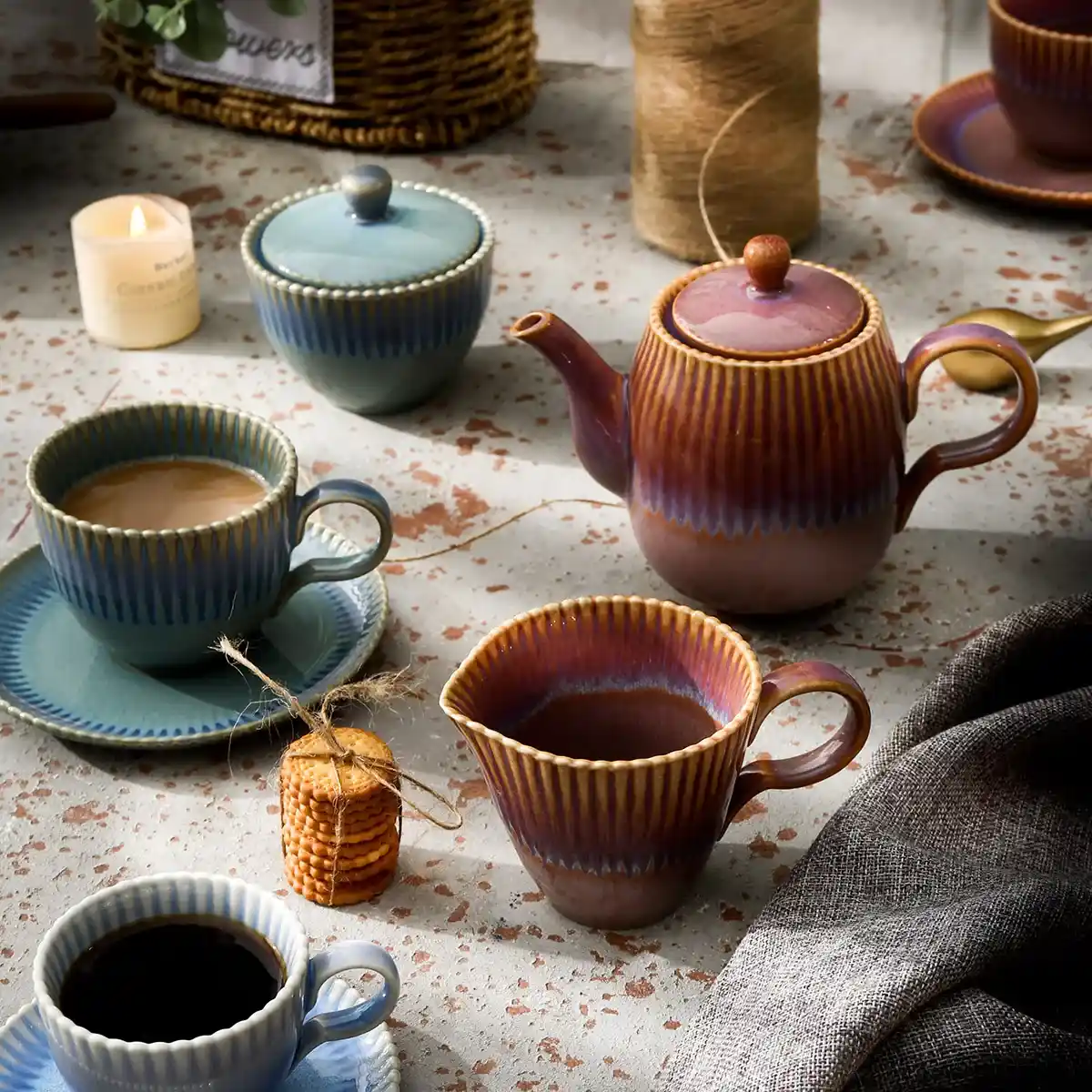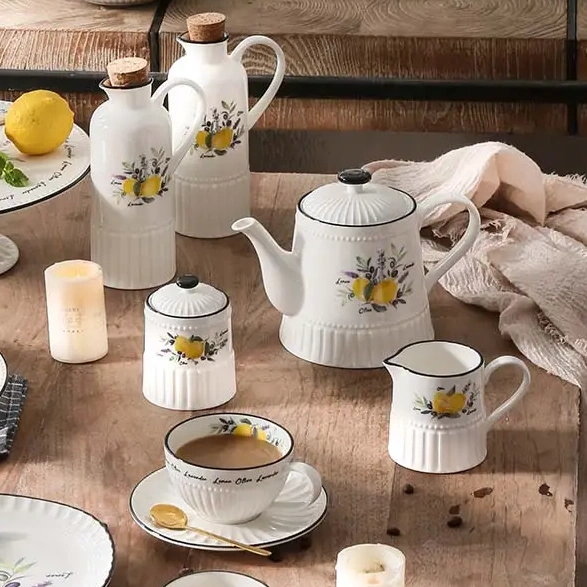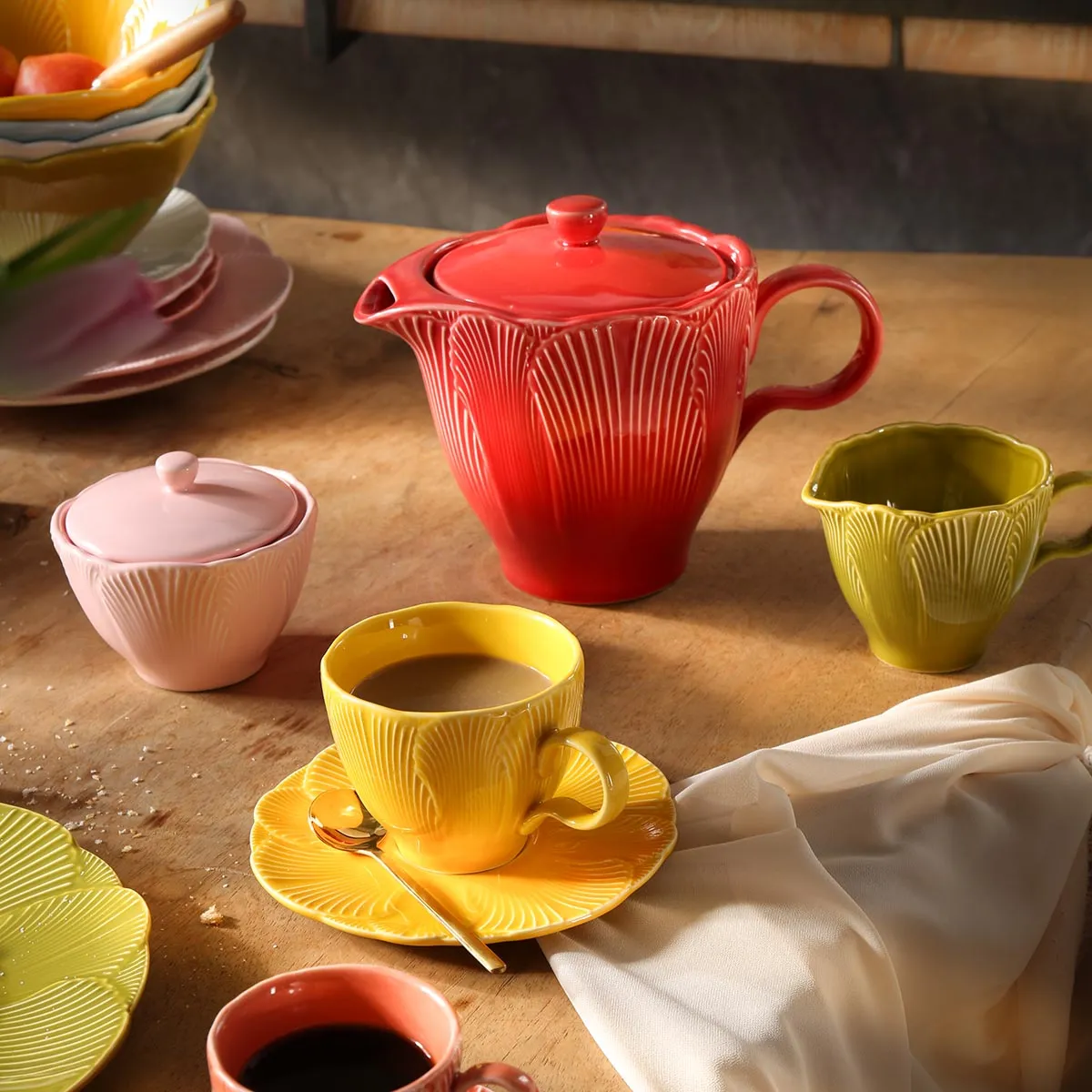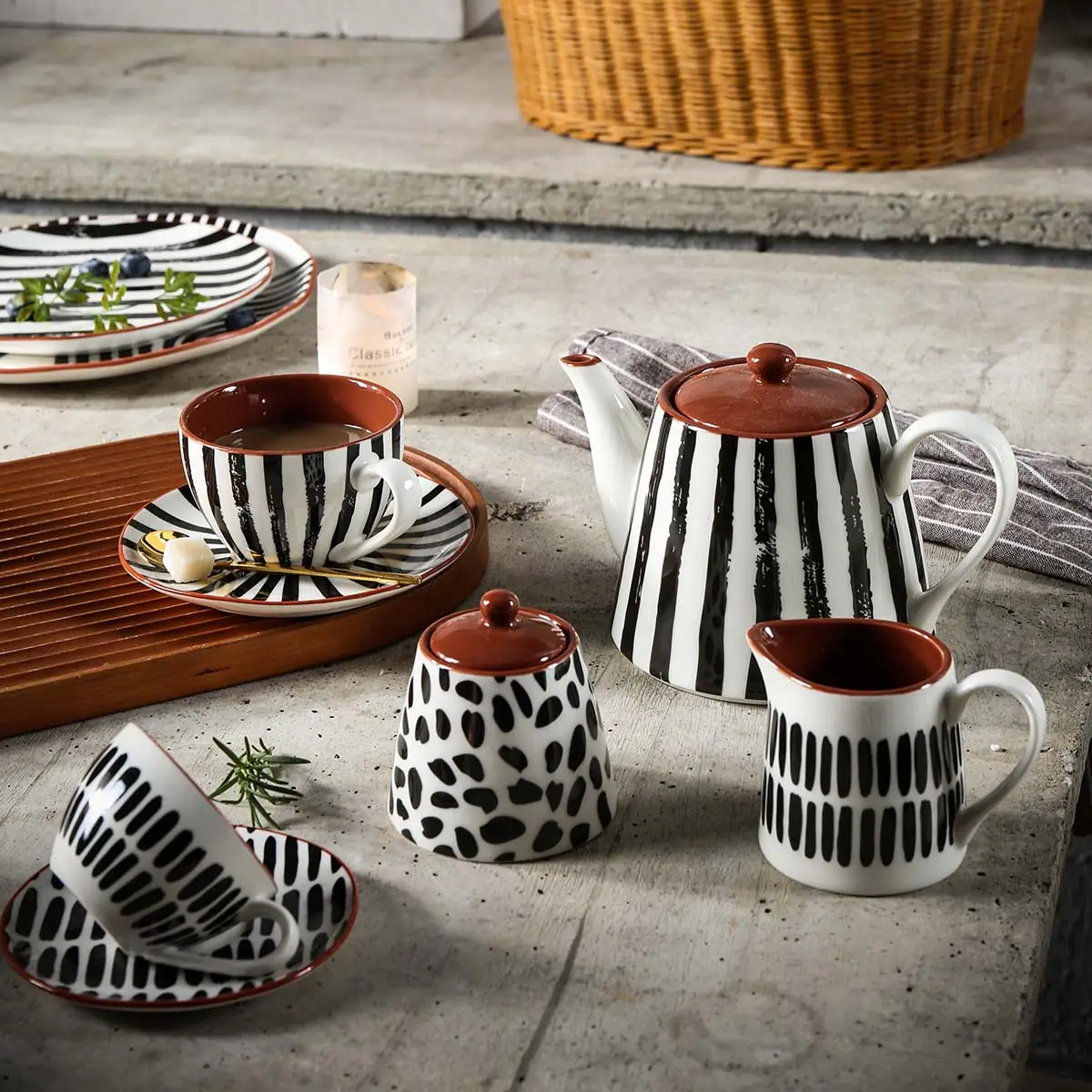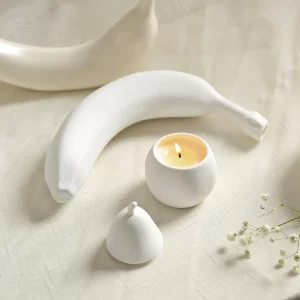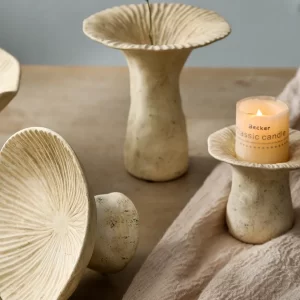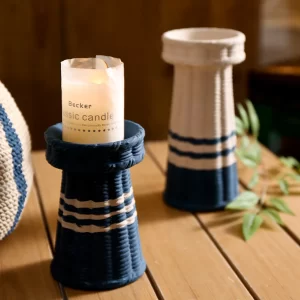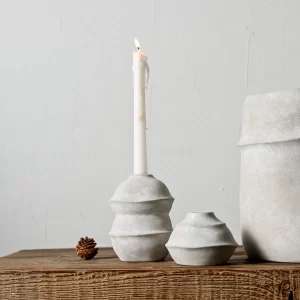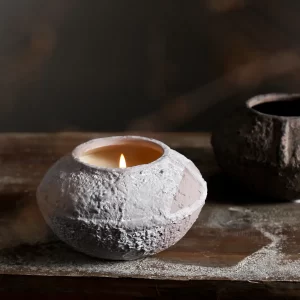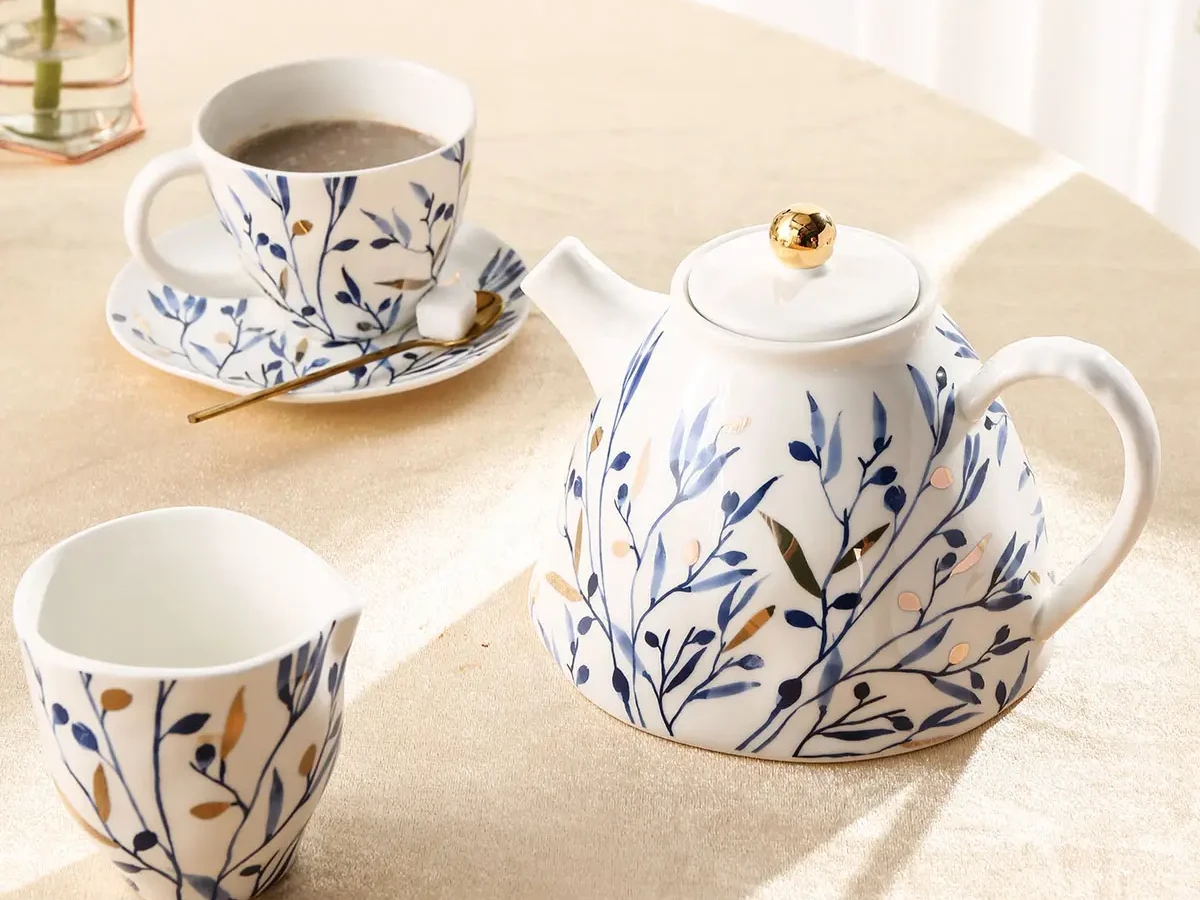
With the current fashion of tea culture, ceramic teapots are not just tea-brewing tools but a necessary product for the catering industry, retail trade, gift shops, and luxury teahouses. As a buyer, selecting the right material will directly influence the customer’s experience of drinking tea and the product’s competitiveness in the market.
Popular materials used for teapots include ceramic, glass, stainless steel, and cast iron, each with their own unique properties. For a professional buyer, however, the safest choice would be the steatite teapot since it is also providing heat retention, flavor, safety, and aesthetics.
In this article, LovingHome will provide a comprehensive comparison and contrast of the pros and cons of various teapot materials, explaining why ceramic teapots are the best option for clients. Lastly, we’ll offer stable ceramic teapot wholesale and supply services.
Comparison of Common Teapot Materials
Ceramic Teapots—The Best Choice, Combining Tradition and Modernity
Advantages:
- Excellent thermal insulation: Ceramic is a natural insulator, effectively maintaining the temperature of tea.
- No alteration to tea flavor: Ceramic is neutral and non-reactive, preserving the tea’s original aroma and taste.
- Various designs: Can be fired in a variety of glaze colors and shapes, combining functionality with decorative elements.
- Safety and environmental friendliness: Food-grade, lead-free, and nickel-free glazes are harmless to the human body.
Disadvantages:
- Fragility: Compared to stainless steel and iron kettles, ceramic teapots are more susceptible to damage during transportation and daily use.
- Unsuitable for open flame heating: Most ceramic teapots cannot be used directly on stovetops or over open flames and require hot water for brewing.
Suitable for: Homes, restaurants, teahouses, hotels, gifts, and retail markets.
Glass Teapot–Beautiful but Fragile
Advantages: Transparent and visible, allowing for a clear view of the brewing process.
Disadvantages: Poor heat retention, fragile with a requirement for gentle cleaning, and high risk for bulk buying.
Stainless Steel Teapot–Durable but lacking in taste
Advantages: Durable and strong, with high temperature and drop resistance.
Disadvantages: May impart metallic aroma, interfere with the taste of the tea, and have an unappealing cold, hard appearance.
Cast Iron Teapot–Heavy and difficult to maintain
Advantages: Excellent heat retention and a rich, luxurious feel.
Disadvantages: Heavy and difficult to manage, prone to rusting if not maintained painstakingly, and not ideal for daily restaurant service.
Overall Advantages of Ceramic Teapots
Preserving the Original Flavor of Tea
Ceramic does not respond chemically to tea, nor does it absorb the tea aroma or leave unpleasant odors like metal or plastic, making it the ideal material to maintain the original flavor of tea.
A Variety of Designs to Meet Diverse Needs
Ceramic production is flexible and can create teapots of varying capacities, colors, and decoration effects. Whether you’re looking for a minimalist, modern style or a traditional, oriental aesthetic, there’s a ceramic teapot to match.
Food-Grade Safety and Reliability
Ceramic teapots are created through high-temperature firing and food-grade glazes and are safe, non-toxic, and lead and nickel free, making them ideal for individuals who prefer a safer tea-drinking experience.
Wide Range of Applications
Compared to the fragility of glass, the heaviness of iron kettles, and the odor of metal kettles, ceramic teapots have wider applicability in homes, teahouses, hotels, and catering businesses.
Sustainability and Environmental Protection
Ceramic teapots are long-lasting and recyclable, making them a choice that aligns with current green consumption trends.
Key Points for Purchasing Ceramic Teapots
Capacity Selection
Home and Personal Use: Small 300–600ml teapots.
Teahouses and Restaurants: Medium to Large 800ml–1.5L teapots.
Style Selection
Modern Dining: White or Morandi colored, simple and elegant.
Specialty Teahouses/Gifts: Artistic handicrafts such as glaze change, hand-painting, and relief carving.
Bulk Customization
Printing of logos, custom colors, and shapes can be offered to enable brand recognition.
Supplier Selection
A high-quality ceramic teaware supplier should possess: large-scale production capabilities, strict quality inspections, and stable delivery cycles.
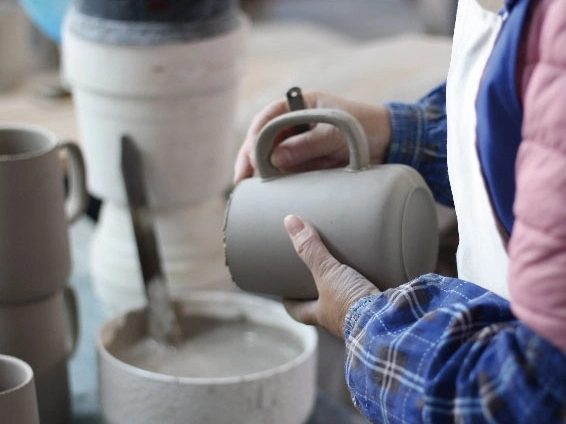
FAQs About Ceramic Teapots
1. Are ceramic teapots safe?
Yes. High-quality ceramic teapots use food-grade raw materials and glazes and do not contain nickel. Ceramic teapots are safer for metal allergy patients than stainless steel teapots.
2. Are ceramic teapots safe for the stove?
It is not recommended to use them directly over an open flame or electric stove. Ceramic teapots are better suited for brewing with hot water. If you need to heat the teapot on the stove, we recommend using a specially designed, fire-resistant ceramic teapot.
3. Do ceramic teapots keep tea hot?
Yes. Ceramic is an insulator, which helps to retain the heat of the tea nicely, making it a better choice for long-term tea enjoyment compared to glass teapots.
4. How to clean a ceramic teapot?
For daily cleaning, simply rinse with warm water; avoid using harsh chemical cleaners.
5. How to clean the inside of a ceramic teapot?
If there are tea stains on the inside, soak it in baking soda and warm water, or lightly scrub it with white vinegar. This will remove the stains without damaging the glaze.
6. How to heat a ceramic teapot?
The best way is to preheat it with hot water: first pour a small amount of hot water into the teapot and shake it to warm it up before adding the tea. This prevents cracks caused by sudden changes in temperature and better preserves the tea’s aroma.
7. How to keep a ceramic teapot warm?
You can use a warming mat or teapot cover on a tabletop. Some dining settings utilize a warming stove or candle-heated base.
8. Are ceramic teapots the best material to use?
Yes. Ceramic teapots offer advantages such as heat retention, durability, safety, and no alteration to the tea’s flavor, making them a top choice for both the restaurant and retail markets.
9. Can you microwave a ceramic teapot?
Most ceramic teapots are microwaveable, but metal trim or special decorations are not recommended.
10. Is the ceramic teapot heat-resistant?
Heat-resistant. High-quality ceramic teapots develop excellent heat resistance during the high-temperature kiln firing process and can withstand hot water. However, avoid sudden changes in temperature to prevent cracking.
LovingHome: A Trusted Ceramic Teapot Wholesale Supplier
As an experienced manufacturer of ceramic tableware and teaware, LovingHome offers quality wholesale ceramic teapots to overseas buyers, retailers, and hotel and restaurant channels:
- Ceramic teapot wholesale: We offer a variety of capacities, styles, and craftsmanship options to suit diverse market needs. Catering Teapots: Our products are designed for durability and aesthetics, perfect for frequent use.
- OEM/ODM Customization: We support logo printing, exclusive color and design development, helping customers build a differentiated brand.
- Stable Supply Chain: Modern production lines and digital warehousing systems ensure on-time delivery of large orders.
- Strict Quality Control: We use food-grade, safe glazes, and our products undergo safety testing to ensure they are safe and reliable.
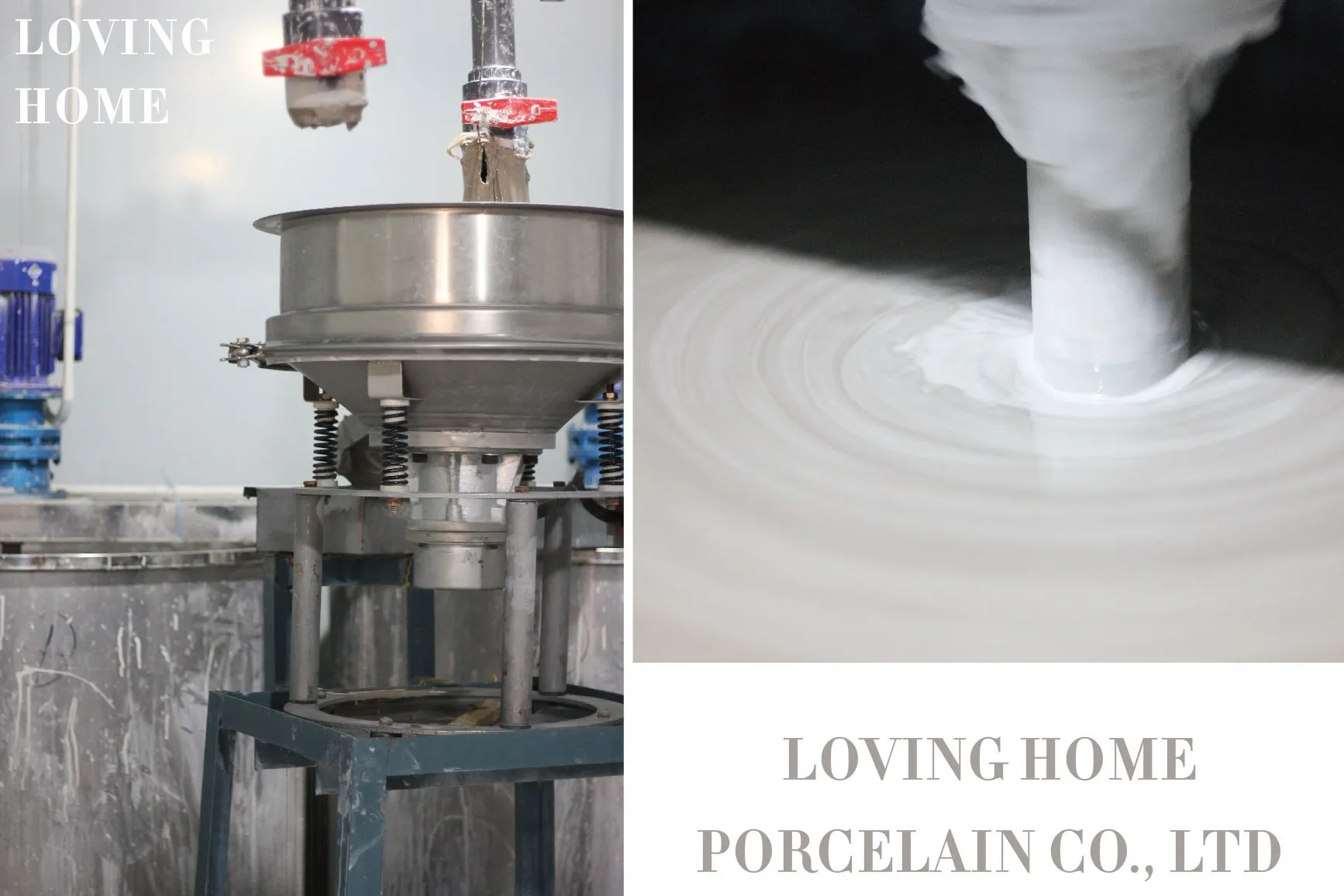
Why Choose LovingHome?
- Expert Manufacturing: Over 30 years of ceramic manufacturing experience.
- Global Partnerships: Supporting retailers, hotels, restaurant chains, and gift channels.
- Flexible Supply: We support bulk purchasing, small-batch customization, and fast delivery.
If you’re looking for a reliable ceramic teapot supplier, LovingHome is your trusted partner. Contact us for more information on wholesale and custom ceramic teapot solutions to power your catering and retail business.
